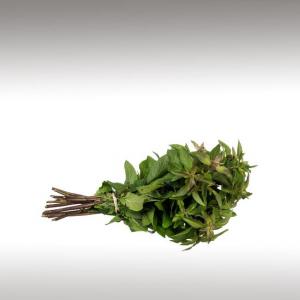
PEPPERMINT ESSENTIAL OIL (MENTHA X PIPERITA) - ESSENTIAL OILS

BASE / GENERAL DATA
Information submited: April 20, 2015 Modified: March 21, 2018 By: OperaDreamhouse
Botanical Name: Mentha x piperita
Common Method of Extraction: Steam Distilled
Part Typically Used: Leaves and Flowers/Buds
Color: Clear with a Yellow Tinge
Consistency: Thin
Perfumery Note: Top
Strength of Initial Aroma: Minty, strong, reminiscent of peppermint candies, but more concentrated. More fragrant than spearmint. Fresh, very minty, hot, herbaceous, with a vegetative back note.
Note: If you find Peppermint oil to be a bit too intense, you may enjoy working with Spearmint oil.
Peppermint (Mentha × Piperita, also known as Mentha Balsamea Willd) is a Hybrid mint, a cross between Watermint and Spearmint. The plant, indigenous to Europe and the Middle East, is now widespread in cultivation in many regions of the world.
Peppermint is a fast-growing plant, once it sprouts, it spreads very quickly. Being a hybrid, it is usually sterile, producing no seeds and reproducing only vegetatively, spreading by itsrhizomes. If placed, it can grow anywhere, with a few exceptions.
It is a perennial plant growing to 30 - 90 cm tall, with smooth stems, square in cross section. The leaves are from 4 - 9 cm long and 1,5 - 4 cmbroad, dark green with reddish veins, and with an acute apex and coarsely toothed margins. The leaves and stems are usually slightly fuzzy. The flowers are purple, 6 - 8 mm long, with a four - lobed corolla about 5 mm diameter. Flowering is from mid to late summer.
Peppermint Latin name, Mentha Piperita, comes from the Greek Mentha, the name of a mythical nymph thought to have metamorphosed into the plant, and the Latin Piper, meaning Pepper.
MenthaPpiperita has been found in Egyptian tombs dating back to 1000 B.C. and there is evidence that Peppermint has a long history in Europe, China, and Japan.
It is one of the world’s oldest medicinal herbs, and is used in both Eastern and Western traditions. Ancient Greek, Roman and Egyptian cultures used the herb in cooking and medicine.
Peppermint is currently one of the most economically important aromatic and medicinal crops produced in the U.S. The world production of Peppermint oil is about 8000 tons per year 1.
Chemical structure:
Peppermint has a high menthol content. The oil also contains menthone and menthyl esters, particularly menthyl acetate.
Dried Peppermint typically has 0,3 - 0,4% of volatile oil containing menthol (7 - 48%), menthone (20 - 46%), menthyl acetate (3 - 10%), menthofuran (1 - 17%) and 1,8-cineole (3 - 6%). Peppermint oil also contains small amounts of many additional compounds including limonene, pulegone, caryophyllene and pinene.
Menthol is the primary component of the essential oil of Peppermint. It occurs naturally as a colorless crystal or powder. Menthol is mostly responsible for the spasmolytic nature of peppermint.
Peppermint also contains terpenoids and flavonoids such as eriocitrin, hesperidin and kaempferol 7 - O-rutinoside.
Mild climate stress in the growing conditions of the plant increases the oil content and sesquiterpene levels in the oil.
Common Method of Extraction: Steam Distilled
Part Typically Used: Leaves and Flowers/Buds
Color: Clear with a Yellow Tinge
Consistency: Thin
Perfumery Note: Top
Strength of Initial Aroma: Minty, strong, reminiscent of peppermint candies, but more concentrated. More fragrant than spearmint. Fresh, very minty, hot, herbaceous, with a vegetative back note.
Note: If you find Peppermint oil to be a bit too intense, you may enjoy working with Spearmint oil.
Peppermint (Mentha × Piperita, also known as Mentha Balsamea Willd) is a Hybrid mint, a cross between Watermint and Spearmint. The plant, indigenous to Europe and the Middle East, is now widespread in cultivation in many regions of the world.
Peppermint is a fast-growing plant, once it sprouts, it spreads very quickly. Being a hybrid, it is usually sterile, producing no seeds and reproducing only vegetatively, spreading by itsrhizomes. If placed, it can grow anywhere, with a few exceptions.
It is a perennial plant growing to 30 - 90 cm tall, with smooth stems, square in cross section. The leaves are from 4 - 9 cm long and 1,5 - 4 cmbroad, dark green with reddish veins, and with an acute apex and coarsely toothed margins. The leaves and stems are usually slightly fuzzy. The flowers are purple, 6 - 8 mm long, with a four - lobed corolla about 5 mm diameter. Flowering is from mid to late summer.
Peppermint Latin name, Mentha Piperita, comes from the Greek Mentha, the name of a mythical nymph thought to have metamorphosed into the plant, and the Latin Piper, meaning Pepper.
MenthaPpiperita has been found in Egyptian tombs dating back to 1000 B.C. and there is evidence that Peppermint has a long history in Europe, China, and Japan.
It is one of the world’s oldest medicinal herbs, and is used in both Eastern and Western traditions. Ancient Greek, Roman and Egyptian cultures used the herb in cooking and medicine.
Peppermint is currently one of the most economically important aromatic and medicinal crops produced in the U.S. The world production of Peppermint oil is about 8000 tons per year 1.
Chemical structure:
Peppermint has a high menthol content. The oil also contains menthone and menthyl esters, particularly menthyl acetate.
Dried Peppermint typically has 0,3 - 0,4% of volatile oil containing menthol (7 - 48%), menthone (20 - 46%), menthyl acetate (3 - 10%), menthofuran (1 - 17%) and 1,8-cineole (3 - 6%). Peppermint oil also contains small amounts of many additional compounds including limonene, pulegone, caryophyllene and pinene.
Menthol is the primary component of the essential oil of Peppermint. It occurs naturally as a colorless crystal or powder. Menthol is mostly responsible for the spasmolytic nature of peppermint.
Peppermint also contains terpenoids and flavonoids such as eriocitrin, hesperidin and kaempferol 7 - O-rutinoside.
Mild climate stress in the growing conditions of the plant increases the oil content and sesquiterpene levels in the oil.

SPIRITUAL PRACTISES DATA
Information submited: April 20, 2015 Modified: March 21, 2018 By: OperaDreamhouse
Adding a few drops of Peppermint to a massage oil or lotion and rubbed on after a Yoga session or enthusiastic hike can do wonders for restoring feelings of comfort and ease.
Peppermint powerfully sharpens mental focus by removing dull and hazy feelings.
As a cooling oil, Peppermint is also extremely effective for taking the edge off of tension. Peppermint's cool and clearing nature makes it ideal for stimulating mental agility and improving concentration for the tasks at hand. It is also effective against worry, grief and heaviness.
Peppermint powerfully sharpens mental focus by removing dull and hazy feelings.
As a cooling oil, Peppermint is also extremely effective for taking the edge off of tension. Peppermint's cool and clearing nature makes it ideal for stimulating mental agility and improving concentration for the tasks at hand. It is also effective against worry, grief and heaviness.

MEDICINE / HEALTH DATA
Information submited: April 20, 2015 Modified: March 20, 2018 By: OperaDreamhouse
Contraindications: Inhalation of large doses of menthol may lead to dizziness, confusion, muscle weakness, nausea and double vision.
Children: Peppermint oil is linked to causing seizures in children. Avoid dermal use on children under 6 years. Do not apply undiluted Peppermint essential oils to the feet, particularly on infants and children under the age of 12.
For more than 100 years, physicians have understood the importance of this, and have used pure Peppermint in the treatment of nasal congestion and sinusitis.
Children: Peppermint oil is linked to causing seizures in children. Avoid dermal use on children under 6 years. Do not apply undiluted Peppermint essential oils to the feet, particularly on infants and children under the age of 12.
For more than 100 years, physicians have understood the importance of this, and have used pure Peppermint in the treatment of nasal congestion and sinusitis.

BEAUTY / COSMETICS DATA

FOOD / COOKING DATA
COMMENTS
No comments.
Newest mixtures containing Peppermint Essential Oil (Mentha x Piperita):

Homemade White Tiger Balm (karpura)
July 30, 2015

Home made toothpaste
June 4, 2015

Inhalation treatment of sore throat
April 20, 2015


